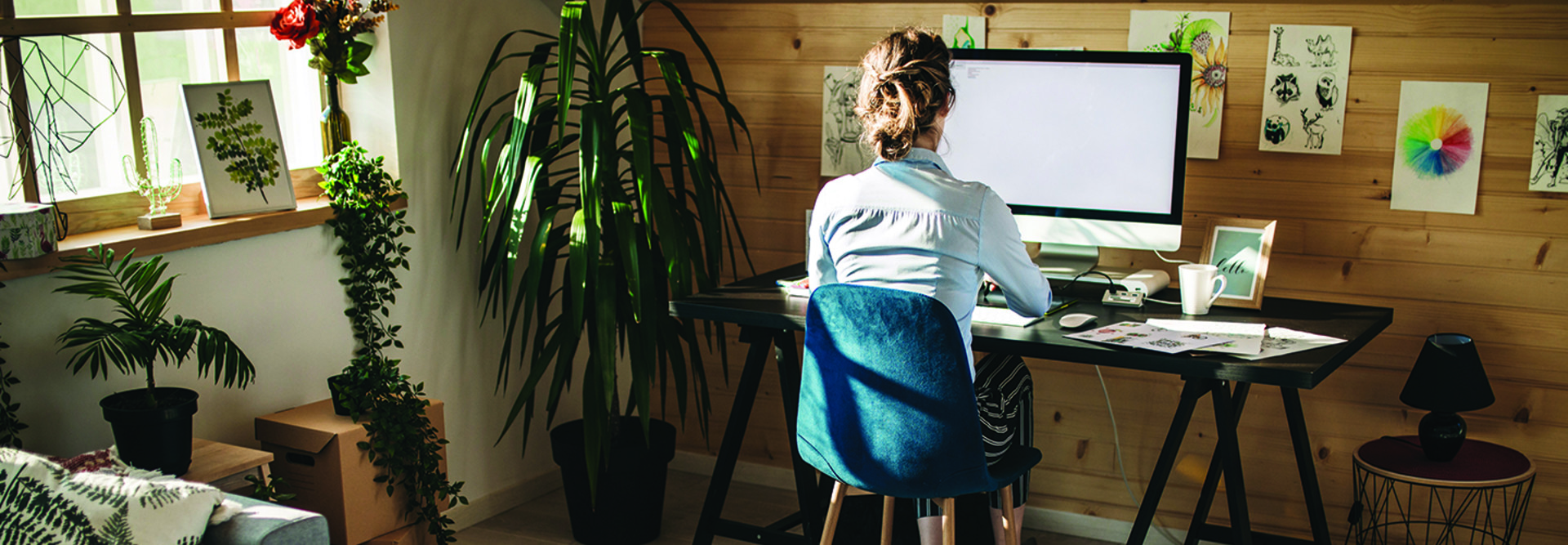What Tech Do You Need in Your Home Office Setup?
The most important piece of technology for the home office is the computer. To communicate with coworkers and access company data, employees are going to need a computer. Desktops offer more power, while notebooks provide more mobility, so the best option depends on the needs of the worker. For those using laptops, accessories such as a monitor, keyboard and mouse can also go a long way toward providing comfort.
While those are the more basic needs, there are other things that workers require to fully utilize the communication and collaboration tools their organizations are using. Since businesses are leaning heavily on videoconferencing during widespread remote work, being able to enhance that experience is important.
“Could someone throw in some AirPods and use their webcam built into their laptop? They can,” says Mike Murphy, solution architect team lead at CDW. “But that’s barely minimally viable. If we want folks to really feel connected, you’ve got to up the level of collaboration tools you’re giving them a little bit if you can.”
Murphy says that investing in things like webcams and headsets can not only make the worker’s experience better but also help with collaboration.
“This provides a good experience for the end user and empowers them,” he says. “But more importantly, it provides a good experience for all the others you’re collaborating with, with noise cancellation and high-quality video and things like that.”
INSIDER EXCLUSIVE: Watch how to successfully lead an organization into the future of work.
Is Your Home Office Setup Geared Toward Productivity?
Setting up the technology properly is just as important as getting the right tools. It can be difficult to focus on work if a chair is uncomfortable, you have to squint to see the computer screen or you have to tilt your head down to read what you’re typing, making ergonomics critical. These positions might be easily overcome to get through work in the short term, but during long-term or frequent remote work, they can cause serious neck, back or hip pain.
Workspace comfort begins with the chair. The Mayo Clinic advises choosing a chair that supports your spinal curve, adjusting the height so that your knees are parallel to your hips and your feet rest flat on the floor. Arms should be able to rest gently at your side with shoulders relaxed.
Monitor placement is also key, with Mayo Clinic recommending that the screen be about an arm’s length away.
“The top of the screen should be at or slightly below eye level,” according to Mayo Clinic. “If you wear bifocals, lower the monitor an additional 1 to 2 inches for more comfortable viewing.”
For employees working on notebooks, this may mean using an external monitor or resting the computer on something elevated to raise the level of the screen, as looking down for long periods can cause neck pain. The keyboard and mouse should also be placed within comfortable reach and on the same surface, with the keyboard directly in front of the monitor.
There should be enough room for clearance of your feet and knees under your desk. Ergonomic desks are ideal for finding just the right fit, but if the right balance can’t be achieved by adjusting the height of your desk, Mayo Clinic recommends putting sturdy boards or blocks under the desk legs to help. If your feet don’t rest evenly on the floor, getting something to rest them on is ideal.












